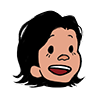This video is a comprehensive look at the broad range of tools, both traditional and unconventional that can be used in oil, acrylic, ink, watercolor, and gouache.
Brush shapes & types, palette knives, cleaning tools, and more are explained. Discussion led by Art Prof Clara Lieu and Teaching Artist Alex Rowe.


Video Walkthrough
- How much does the price of the brush relate to the quality?
- Brands aren’t that important when buying brushes
- Go to the art store so you can physically touch the brushes
- Choosing brushes is all about your personal taste and preferences
- Acrylic brushes are softer and more delicate
- Bristle brushes are coarser, but able to have more “power” as a brush
- Brush shapes: filbert, flat, round
- Liner brush: great for elegant lines
- Brushes for Chinese painting
- Water brushes are great for plein air
- Cheap bristle brushes from the hardware store are good for gesso
- Fan brushes are surprisingly versatile and give great effects
- Palette knives: plastic vs. metal
- Palette knives: flat vs. offset
- Tools for scraping into paint
- Literally anything can be a tool
- 3D effects: syringes & pastry bags
- Plastic dropper for ink gradients
- Tube wringer is great for squeezing out every last drop of paint
- Rags are good for clean up, but they are also effective as a painting tool
- Blue shop towels vs. cotton rags
- Window scrapers for glass palettes

Resources
The complete Painting for Self-taught Artists Curriculum document links to every video that expands on the topics touched here.
Full Curriculum
Overview · Painting 1 · Painting 2 · Painting 3

Art Supplies

Prof Lieu’s Tips

I would recommend staying away from straight white paint, that’s usually why highlights can feel chalky.
Depending on the lighting situation, I pretty much always add a touch of cadmium lemon yellow, or cerulean blue, etc. I rarely paint with straight white paint directly onto the canvas.

Same thing with black, mixing your own blacks is a really good experience and can provide a lot more nuance and variation in the dark areas. Two of my favorite black mixtures are:
- viridian + alizarin crimson
- ultramarine blue + burnt umber

As a free educational source, Art Prof uses Amazon affiliate links (found in this page) to help pay the bills. This means, Art Prof earns from qualifying purchases.



